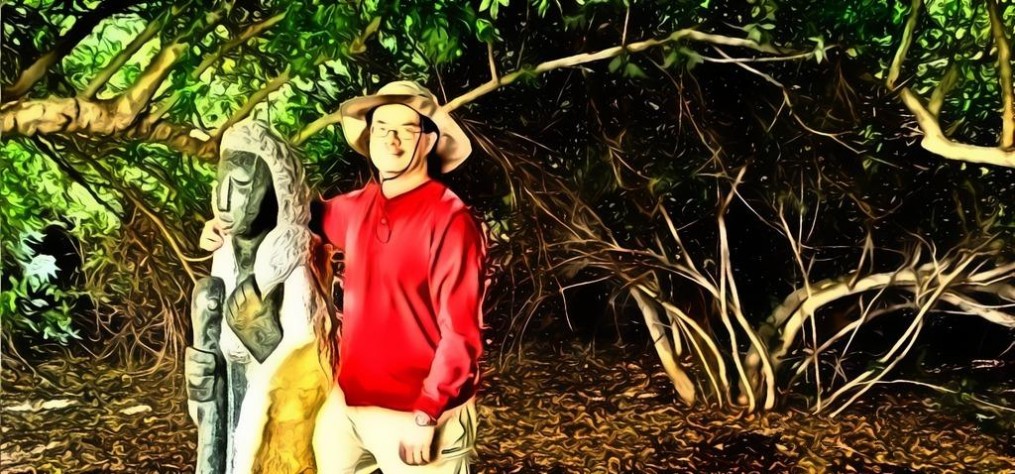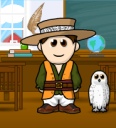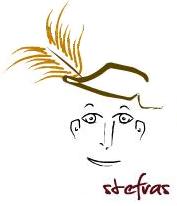The power of a PLN
Whether a teacher, a student or some other person, two key things every person wants (socially), a personal learning network (PLN) can provide. At our most fundamental, we all want to be noticed or recognized and we all want to make a difference, leave a mark or share what we can offer. (Some of us do this negatively; most of us contribute positively.)
These needs are not entirely associated. We don’t necessarily want to be recognized or noticed for what we share, though perhaps we would like to know that out contribution was worth our effort. We do however want to be noticed.
A PLN can provide camaraderie, a medium to voice and debate opinions, a community to which we can offer help, or ask for help, including resources, and a forum with which we can develop professionally.
It is within the PLN’s active interaction that we draw personal and professional growth and we build sometimes lifelong friendships and learning.
The following conversation is a good example of a PLN being built and in action using Twitter.
The players:
First, here are some statistics to help you spatially and temporally place Lisa, Heidi and me. We have never met each other. I have been following both for some time and Heidi has followed me for a while. Lisa followed me on February 5, after this conversation. I do not know if they knew about each other prior to this conversation. Ralph followed Lisa and Heidi, I think, because of the conversation as well. So this one conversation built several relations.
Here is who we are and where we come from.
@stefras: Shawn Urban, Edmonton, Alberta, Canada, (0hr, UTC-7, tracked)
@HHG: Heidi Hass Gable, Coquitlam, BC, Canada, (-1hr, UTC-8)
@Langevin: Ralph Langevin, Ottawa, Ontario, Canada, (+2hr, UTC-5)
@wfryer: Wesley Fryer, Location 3rd rock from the sun, (which is well beyond my ability to place in time and space; I used to be located Jumpin’ btw Janus and Epimetheus, which is even harder to place, though it
only happens every four years)
hptrainingworks: Hugh Phillips, Edmonton, Alberta, Canada, (0hr, UTC-7, who I have met in person, but who as far as I know does not have a Twitter account; good thing, given that I reversed his name in this conversation. Oy!)
The conversation:
Feb 3
10:31 pm @InnovativeEdu:
@wfryer – Is that new? Maybe the distractions just changed. Maybe we got worse at prioritizing. Maybe students don’t get to own learning.
10:46 pm @stefras:
Maybe just ask questions and let them learn on their own. RT @InnovativeEdu maybe students don’t get to own learning.
Feb 4
5:38 am @InnovativeEdu:
@stefras – maybe the students don’t need us to ask questions. maybe they need us to back off so they can learn how/what they want.
12:57 pm @stefras:
@InnovativeEdu Letting them learn what they want: But they might not learn beyond what they want or what they don’t know exists.
12:58 pm @stefras:
@InnovativeEdu Teachers open doors and windows, knock down walls and disturb universes.
1:00 pm @stefras:
@InnovativeEdu They show students what is out there, teach them convention and dare them to leave their comfort zones. Teachers ask.
1:01 pm @stefras:
@InnovativeEdu In short, teaching does not exist until a question is asked. Learning does not exist until a question is considered.
1:01 pm @HHG:
@InnovativeEdu @stefras Maybe students need both. Does it have to be either/or?
1:02 pm @stefras:
@HHG I think variety is the best way to teach. Send them out to find their own learning and ask them questions to introduce them to others.
1:05 pm @stefras:
@InnovativeEdu Variety best. Send them out to find their own learning and ask them questions to introduce them to others. @HHG
1:06 pm @HHG:
@stefras @InnovativeEdu Yes – sometimes they don’t know what they don’t know. Other times, we need to step back & let them lead.
1:09 pm @stefras:
@InnovativeEdu @HHG RT @Langevin: Design all activites, exercises, reviews, etc., so learners will be successful but also challenged.
1:09 pm @stefras:
@HHG Teach the arbitrary; allow kids to figure out the necessary (Hewitt http://bit.ly/fmr3XS) @InnovativeEdu otherwise u enable dependancy
1:21 pm @stefras:
@HHG @InnovativeEdu It doesn’t matter who asks the question, even the student. re: teaching (and learning) starts with a question.
1:26 pm @HHG:
@stefras @InnovativeEdu What about the foundational stuff in elem? Alphabet. Numbers. Writing. Reading.
1:54 pm @stefras:
Having a great discussion with @HHG and @InnovativeEdu about what teachers should teach and what should let discover
1:54 pm @Langevin:
@stefras thanks for the RT and the intro to @InnovativeEdu @HHG. glad you found my tip helpful…there’s more to come…have a great wkend!
2:03 pm @HHG:
@stefras Like that! Reminds me of talk by director of NotSchool in UK. Engage kids thru their passion – let that lead to the need for basics
2:15 pm @stefras:
@Langevin you are welcome.
2:18 pm @stefras:
@HHG Hewitt is from UK as well. His idea: some info can be worked out; no teacher needed. Others: can’t learn unless taught: e.g.terminology
2:25 pm @stefras::
@HHG Phillip Hughs: one set of kids: taught paddling, let in canoes, bored; second set: let in canoes first, begged to learn paddling.
2:26 pm @stefras:
@InnovativeEdu @HHG Let them drown. Then teach them how to swim.
3:19 pm @InnovativeEdu:
@stefras – Agree. Show students what is out there, but I don’t think we need to force students to learn things they’re not interested in?
3:20 pm @InnovativeEdu:
@HHG @stefras – My issue is not giving students choice & authentic learning opps. Teachers can open doors, but shouldn’t force em through
3:21 pm @InnovativeEdu:
@stefras @HHG – Socratic method is fine, but often students don’t need to depend on teacher for learning. They can find their own questions
3:22 pm @InnovativeEdu:
@stefras @HHG @Langevin – It’s more powerful if we let students design /own the learning with our support. Independent learners is key
3:22 pm @InnovativeEdu:
@stefras @HHG – learning can start with a question. doesn’t have to start with a question.
3:23 pm @InnovativeEdu:
@HHG @stefras – re: foundational stuff…I recently wrote about that on my blog & they didn’t need teachers…just support / exposure
3:25 pm @InnovativeEdu:
@stefras @HHG – I don’t think they need to drown b4 learning to swim. They need to want to learn to swim then get support in doing so
7:29 pm @InnovativeEdu:
@Langevin @stefras @HHG -My latest post addresses our convo http://theinnovativeeducator.blogspot.com -have faith. Kids will learn w/support
10:31 pm @ExplodingBeaker:
RT @stefras: @InnovativeEdu In short, teaching does not exist until a question is asked. Learning does not exist until a question is considered.
Feb 5
5:24 pm @stefras:
I am doing the same. Great conversation. RT @InnovativeEdu: @Langevin @stefras @HHG -My latest post addresses our convo http://bit.ly/14Nwyc
5:28 pm @stefras:
@InnovativeEdu I actually believe learning begins with noticing. It is the teachers job to set up the opportunity for them to notice.
5:31 pm @stefras:
RT @InnovativeEdu: @stefras @HHG – They need to want to learn to swim then get support in doing so < this was Phillip's point, and mine!
5:35 pm @stefras:
@InnovativeEdu @HHG I just wrote a post, http://bit.ly/eE5QOY, on @InnovativeEdu point re student need/want should precede teacher support.
5:36 pm @stefras:
@HHG You missed: I actually believe learning begins with noticing. It is the teachers job to set up the opportunity for them to notice.
5:39 pm @stefras:
@InnovativeEdu @HHG working on post re our conversation; @InnovativeEdu’s post http://bit.ly/14Nwyc
5:52 pm @HHG:
@stefras Did u see my earlier twts re 12yo’s cigarette questions? Exemplified that – we walked past a group smoking outside the mall…
Feb 6
9:29 pm @stefras:
@HHG Sorry Heidi. I missed your tweets about the 12yo’s cigaratte questions. What was the gist?
9:35 pm @HHG:
@stefras On way into mall, walked past smokers – she started asking about why cigarettes aren’t illegal, if they’re bad for your health?
9:36 pm @stefras:
@HHG That would turn into a sticky conversation. I wonder if she was sassing or actually confused? re smoker
9:36 pm @HHG:
@stefras Led to “well why are drugs illegal then?” Which led to disc. of political system, making laws, human nature, power, money, etc…
9:37 pm @stefras:
@HHG That is what I thought. re drugs and politics. Nice that learning can occur outside of the classroom.
9:38 pm @HHG:
@stefras Next came discussion of social norms, expectations, west coast vs east coast culture…
9:38 pm @stefras:
Wow! RT @HHG: @stefras Next came discussion of social norms, expectations, west coast vs east coast culture…
9:38 pm @HHG:
@stefras All starting from her curiosity – then letting her lead… 🙂
9:39 pm @stefras:
@HHG Nice example of our previous conversation in action.
9:47 pm @stefras:
@HHG So how can we consistently extend such an encounter to the classroom? I would do it via teachable moments, but those are reactive.
The conversation still continues.
The analysis (of the conversation):
- Notice that this conversation is asynchronous.
- There are bouts of intense conversation and at other times of rapid monologues.
- This asynchronicity leads to some threads of the topic bumping into and weaving around each other.
- It also leads to long periods when nothing is said.
- Also notice that Heidi and I both jump into the conversation.
- This is a gamble.
- Sometimes it backfires; usually when this happens you are just ignored.
- But often it can lead to a richer, deeper conversation as each person brings in his own point of view.
- Everyone wins and exits feeling enriched.
- Ralph on the other hand is implicitly invited into the conversation.
- His comment on another thread bears some weight in what Lisa, Heidi and I are talking about.
- I RT (retweet) him while mentioning Heidi and Lisa to bring in his point of view.
- Sean also touches the conversation when he RTs my comment.
- This illustrates that others other than the participants are also interested in the conversation.
- Lurking is another way (though passive) to develop professionally.
- Retweeting is a great means to recognize a well written comment – that is, a comment that makes a good point.
- By retweeting my comment, Sean exposed my comment to people who follow him and not me.
- Any of his followers could also retweet the comment and so on; the best comments might go viral.
- He could also have favorited my comment, saving the tweet in his profile.
- Both these actions compliment your tweet and give you exposure.
- Thanking retweeters and favoriters is good etiquette and builds relationships.
- The conversation is still active.
- I stopped mirroring it here at 9:47 tonight (Feb 6), even though more has already been said.
- I did thank Sean for his retweet, just as Ralph thanked me.
- I think I stopped on a great prompt that you can reflect and perhaps even comment on (both here and on Twitter).
- Some conversations, such as the #edchat and #ksyb conversations, are planned.
- Lisa, Heidi and I could have planned this conversation.
- We could have created and used a searchable hashtag, such as #studentslead.
- The hashtag allows any tweets that use that hashtag to be isolated from all other tweets.
- This allows conversations, such as the one above to be isolated and specifically followed and contributed to.
- We could do that now.
- It certainly would have made collecting the tweets, the times and the sender usernames for this conversation much easier.
- To record the conversation above in this post, I had to open the Twitter profiles of each of the involved people to get all the information I needed.
- With a hashtag I would have opened only one window.
- In fact I could have cut and pasted with minimal formatting.
- Conversations are probably the strongest power of Twitter and PLNs.
- PLNs allow you to develop professionally,
- sometimes such as here without needing to plan for it,
- other times through formal PD opportunities.
- You often don’t know what you might stumble on or be invited into.
- And you don’t know what you can contribute.
- Simply, if you can type or talk you can contribute.
- And you (do) have something unique to contribute.
- So jump in. Say something. Let others respond.
- You don’t exist if no one knows you are there.
- Jump to Lisa’s post on the conversation.
In this last Teacher Challenge of 30 Days to Kick Start Your Blog, we are asked to reflect on the importance of networking and creating personal learning networks (PLNs).
 CC Tagxedo © 2012 Shawn Urban | more info (via: Tagxedo)
CC Tagxedo © 2012 Shawn Urban | more info (via: Tagxedo)













